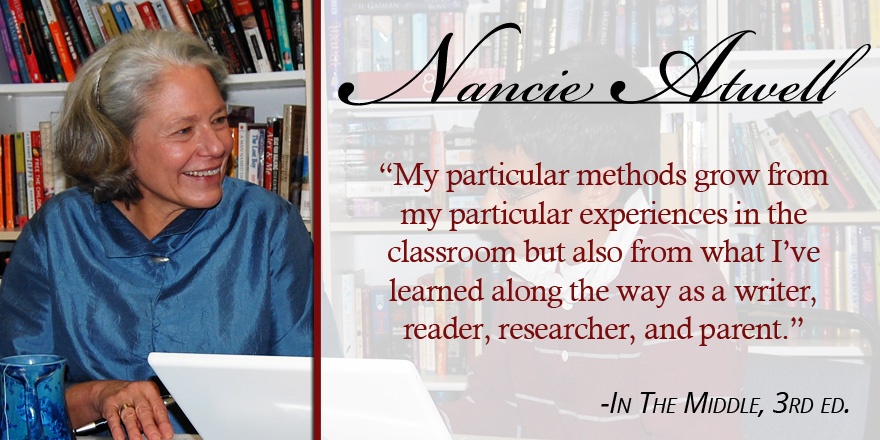The third edition of Nancie Atwell’s In the Middle will be released on November 13th. In a special series, Nancie Atwell blogs for Heinemann Publishing every Wednesday. This week Nancie talks about why she started the Center for Teaching and Learning.
You’ve been so generous in the new book in sharing the details of your teaching life, from the preparation of the classroom, organization of the libraries, folders, and scripts of minilessons, to the rituals and protocols you value and the transcripts of your conferences with students. Reading the book feels like we’re visiting your classroom. And your other recent book and video, Systems to Transform Your Classroom and School, is a guided tour of the whole school’s methods and values. It is wonderful to see the other K-8 teachers in action, too. Why did you start a school? Who chooses CTL, and how do you choose students?
I started the Center for Teaching and Learning (CTL) in 1990 because I wanted to teach kids and teachers at the same time and work with colleagues to develop new methods, experiment with and prove them, and send them out into the world for the benefit of other teachers and students. CTL is a demonstration school. It functions like a lab or campus school, except we aren’t connected to a college or university. We’re a 501(3) c non-profit situated in a Cape Cod-style building on a hillside in rural Maine.
CTL serves seventy-five students of grades K-8 in five groups: K, 1-2, 3-4, 5-6, and 7-8. Each group has its own teacher except for 7-8, which is taught by quarter-time science and math teachers and a half-time teacher of writing, reading, and history. Because we’re a demonstration school, we set the tuition purposely low, so we can attract and teach “regular” kids: the children of farmers, house cleaners and house painters, teachers, retail workers, carpenters, landscapers, fishermen and lobstermen, musicians, physicians, soldiers, and small business owners. The highest annual tuition anyone pays is $8,600; after that, 80% of our students receive reductions in tuition, down to a fee of zero.
It is essential to me and my colleagues that CTL isn't an elite private school. Our mission is to show what’s possible for all kinds of kids. We handpick a student body that represents a diversity of socioeconomic backgrounds and ability levels, so when classroom teachers come to CTL for a week, as participants in our intern program, they'll recognize their students in ours and observe the extraordinary effects of CTL’s methods, systems, and traditions. And when we write about our kids and our teaching—look for professional books by Helene Coffin, Ted DeMille, Glenn Powers, Miki Murray, and me—readers can trust that these aren’t the results of a gifted-and-talented program for children of privilege.
We have kids who struggle just as yours do. I was tempted in the third edition of In the Middle to identify the students with dyslexia, other learning disabilities, and variations of attention deficit disorder. It was a toss-up between showing what is possible for every student when writing and reading instruction is individualized, and giving all of my kids full credit-by-name for their illustrative work. In the end I credited everyone and identified no one who has an IEP. The lesson to be gleaned here is that given the quality of the finished products, I don’t think a reader can tell who’s who.
CTL is the non-profit of all time, perpetually in the red. At this point we have no foundation sponsors, and I am constantly seeking financial support. I used royalties from the first edition of In the Middle to build the school. To try to bridge the difference between income and expenses, I dedicated the royalties from my last three projects for Heinemann—the DVD’s Writing in the Middle and Reading in the Middle, and the book/DVD Systems to Transform Your Classroom and School—to the school’s tuition assistance fund.
It’s a struggle to keep CTL alive. But we’re hanging on and still doing what we said we would twenty-five years ago: innovating for the good of everyone’s students, and then passing along the lessons we learn to our K-8 colleagues everywhere.
This blog post is part of In the Middle Wednesdays series. Please visit http://www.heinemann.com/InTheMiddle to learn more about the book and to read chapter previews.



